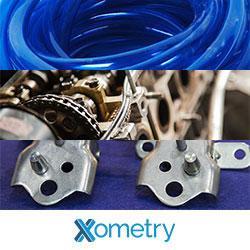Regenerative farmers use nutrient-rich manure and compost to enhance the fertility of the soil and avoid fertilizers that kill beneficial microbes and reduce plant resilience.
 Regenerative Farming: The Need of Modern Agriculture
Regenerative Farming: The Need of Modern Agriculture

Article from | Joylore
Setting off alarm bells among environmental activists globally, a report released by the National Oceanic and Atmospheric Administration, revealed that the carbon dioxide levels in the atmosphere in April 2019 hit a record high in 3 million years. The progressive increase in CO2 levels has not only led to an increase in global temperature but a higher incidence in disruptive weather events like droughts and storms. This has proved to be detrimental to the agricultural industry, by posing several challenges to farmers engaged in sustaining viable farming and food security.
The crisis of climate change is so far advanced that transitioning to renewable energy sources alone won’t be effective in mitigating its impact. It will have to be coupled with efforts to bring down the level of carbon dioxide in the atmosphere that has been released as a result of destructive agricultural practices. Amidst discussions of mitigating the effects of climate change, the concept of regenerative agriculture has been gaining a lot of traction in recent years. Scientists believe that agriculture, from being one of the major sources of greenhouse gases, can become the most affordable and efficient solution to climate change. While conventional agricultural practices rely heavily on the use of synthetic chemicals and fossil fuel, which causes depletion and contamination of environmental resources, regenerative agriculture makes use of techniques such as crop rotation, cover crop, and green manuring. These techniques focus on improving soil health while causing minimal disturbance to the ecosystem. Joylore takes a look at the promising prospects offered by regenerative farming and the different ways in which technology can help the transition.
.jpg)
This holistic method of land management works on the principle of sequestering atmospheric carbon dioxide into the soil, which proves to be beneficial on multiple accounts such as improving human health, productivity, food security, water quality, and air quality while restoring degraded soil. Regenerative farmers use nutrient-rich manure and compost to enhance the fertility of the soil and avoid fertilizers that kill beneficial microbes and reduce plant resilience. To replenish the lost nutrients, cover crops are planted that not only facilitate the absorption of carbon and nitrogen into the soil but also help in arresting soil erosion and pest infestation. Tillage of soil is also avoided as it tends to accelerate carbon emissions into the atmosphere.
On a small scale, many farmers have already experienced success through the implementation of regenerative farming practices and have witnessed a marked increase in soil carbon levels. They’re also harvesting healthier crops that contain more nutrients and are more resistant to drought and other stress factors. But replicating these practices on a larger scale presents certain challenges, especially in terms of profitability, which has kept the majority of farmers from making the shift. The incorporation of agriculture technology into regenerative agriculture helps farmers to make a smoother transition and sustainably maintain them even on a large scale.
Advancements in the agritech industry have given way to the invention of robots capable of operating to an accuracy of 2cm, allowing precise mapping of land and placement of seed. GPS and sensor guided precision farming equipment can aid in providing specialized care to crops in accordance with specific soil health indicators. Scouting and crop care technologies can be employed to optimize irrigation and increase water efficiency. This not only allows for the judicious use of resources but also helps in improving the crop yield.
Studies prove that regenerative farming practices can bring down carbon emissions by more than 40 percent by sequestering atmospheric carbon dioxide into soil carbon. However, the transition to regenerative agriculture is a gradual and challenging process that requires consistent efforts. But the groundbreaking innovations in farm technology make it an exciting time for farmers to venture into this revolutionary method of agriculture.
If you like this article you may like "The Age of Autonomy: Robotic Solutions for the Horticulture Industry"
The content & opinions in this article are the author’s and do not necessarily represent the views of AgriTechTomorrow
Comments (0)
This post does not have any comments. Be the first to leave a comment below.
Featured Product

